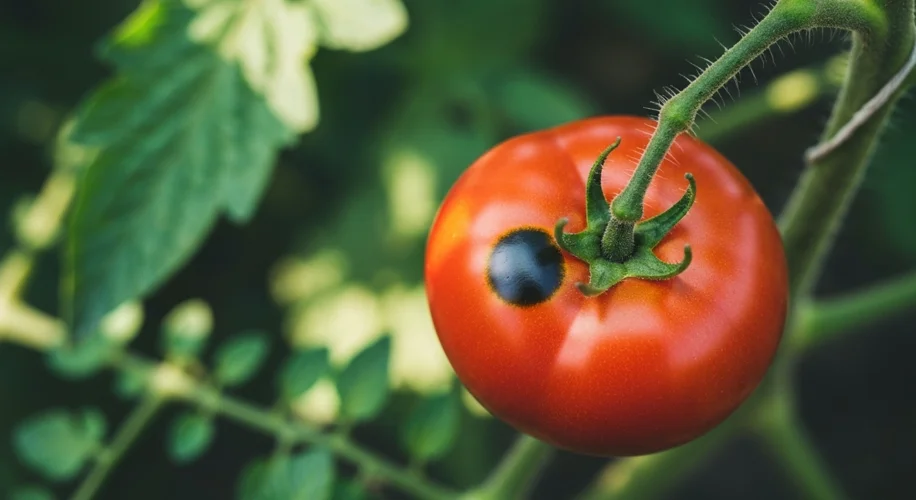It’s mid-August here in the Midwest, and my tomato plants are usually bursting with ripe fruit. But this year, I’ve had a few puzzled emails and comments from fellow gardeners asking, “Why are my tomatoes turning black?” It’s a frustrating sight when you’ve nurtured those plants from tiny seedlings, only to see the fruit developing odd discoloration. Let’s dig into some common reasons why your tomatoes might be sporting a black hue.
Blossom End Rot: The Usual Suspect
By far, the most common reason for black spots, usually on the bottom of the tomato (the end opposite the stem), is Blossom End Rot (BER). Don’t let the name fool you – it’s not a disease or a pest. BER is a physiological disorder caused by a calcium deficiency in the fruit. The plant might actually have enough calcium in the soil, but inconsistent watering can prevent the plant from absorbing it properly. Fluctuations between very wet and very dry soil conditions are the main culprits here.
- What to do: The best defense is a good offense. Aim for consistent watering – deep watering less frequently is usually better than shallow watering every day. Mulching around your plants helps retain soil moisture and keeps temperatures more even. If you suspect a calcium issue, a foliar spray of calcium chloride or a soil amendment with gypsum can help, but consistent watering is the primary fix.
Fungal Spots and Diseases
Sometimes, black spots can be a sign of fungal diseases. These often appear as spots on the leaves, stems, or fruit, and they can spread quickly, especially in humid conditions.
- Early Blight: This often starts as small, dark spots on the lower leaves, which can enlarge and develop concentric rings, looking like a target. It can eventually move to the fruit, causing dark, leathery spots near the stem.
- Late Blight: More aggressive than early blight, this disease can cause large, greasy-looking spots on leaves and stems, and firm, dark, irregular spots on the fruit. It thrives in cool, wet weather.
- Anthracnose: This fungal disease typically affects ripe or overripe fruit, causing small, sunken spots that can enlarge and develop dark, concentric rings. Pinkish mold might appear in humid conditions.
-
What to do: Good air circulation is key. Space your plants properly when planting. Remove any affected leaves or fruit immediately and dispose of them (don’t compost them!). You can also use organic fungicides, like copper-based sprays, as a preventative measure or at the first sign of trouble. Watering at the base of the plant rather than overhead also helps keep foliage dry.
Sunscald: Too Much of a Good Thing?
While tomatoes love sun, extreme heat and intense direct sunlight can sometimes cause damage. Sunscald appears as whitish-yellow or gray patches on the side of the fruit that’s exposed to the sun. As the damaged tissue cools, it can turn brown or black and become leathery.
- What to do: This often happens when plants are stressed, perhaps from pruning too much foliage too early in the season, which exposes developing fruit. Providing shade during the hottest part of the day with shade cloth or even a taller companion plant can help. Ensure your plants are well-watered during heatwaves.
Pests Can Cause Damage Too
While less common for causing widespread blackening, some pests can leave marks that might be mistaken for other issues.
- Stink Bugs and Leaf-Footed Bugs: These insects pierce the fruit to feed, and their feeding can cause small, discolored spots that might darken over time.
-
What to do: Inspect your plants regularly. Handpicking pests off plants is an effective method for small infestations. Insecticidal soaps or neem oil can also be used.
What to Do With Affected Fruit
If you catch Blossom End Rot early, you can often cut away the affected part and still enjoy the rest of the tomato. For fungal diseases or sunscald, it’s often best to remove the affected fruit to prevent further spread or spoilage.
Don’t get discouraged! Gardening is a learning process, and understanding these common issues can help you grow healthier, more abundant tomato harvests next season. Happy gardening!

